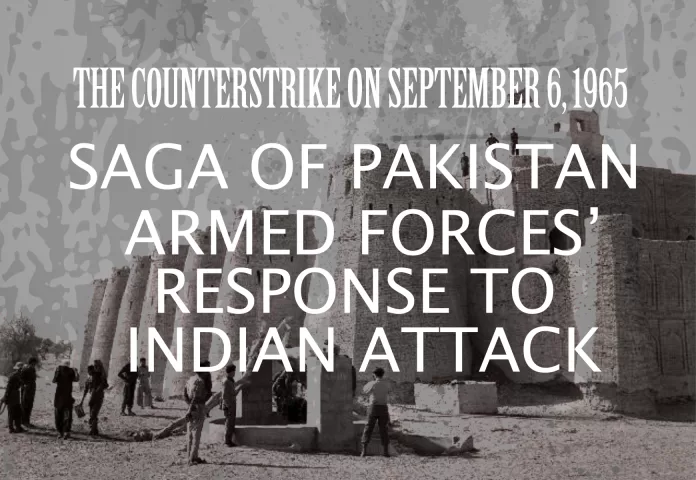58 years have passed since the fateful day of September 6, 1965, a date that Pakistan holds in solemn remembrance. It was on this day that unprovoked and simultaneous attacks were launched by Indian forces, aiming at the cities of Lahore and Sialkot.
This marked the outset of the Indo-Pakistan War of 1965, a significant chapter that has been indelibly imprinted upon the historical tapestry of the subcontinent. This narrative delves into the events leading up to the conflict, shedding light on the origins of India’s aggressive actions and Pakistan’s unwavering response.
The 1965 conflict, a watershed in regional history, spotlighted the indomitable spirit and gallantry of the Pakistani Armed Forces. Concentrated around the Kashmir dispute, the war epitomized the unwavering commitment, unmatched valor, and strategic astuteness displayed by Pakistani soldiers, seamen, and airmen in the face of overwhelming odds. Bracing against the sheer numerical and material superiority of their Indian counterparts, Pakistan’s Armed Forces confronted the challenge across land, air, and sea, emerging as a formidable front.
Beyond the battlefield, the Indo-Pak War revealed an amalgamation of forces, with both the military and civilian sectors rallying wholeheartedly. It was a moment when Pakistan coalesced as a united nation, solidifying the people’s unwavering support for the defense forces. Throughout the tumultuous conflict, the Pakistani military showcased unwavering bravery against an adversary wielding superior resources and numbers. This chapter in history stands as a tribute to the valor that fortified Pakistan’s resilience, unity, and unwavering spirit against all odds.
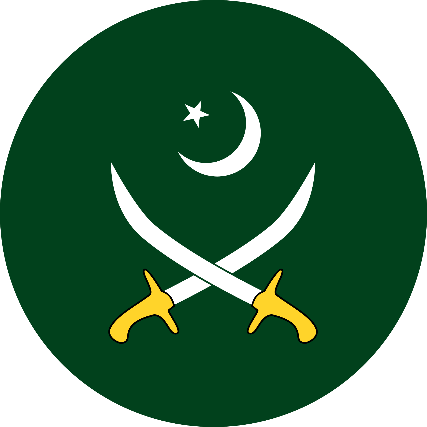
Operations by Pakistan Army
The Indo-Pakistan War of 1965 witnessed the Pakistani Army emerging as a cornerstone in safeguarding the nation’s borders and orchestrating strategic counteroffensives against the Indian Army. The conflict, a tapestry of battles and strategic maneuvers, exemplified the Pakistani Army’s prowess and unwavering resolve.
The Pakistanis army was carrying out its routine duties as a matter of fact 25% of the strength was on leave cycles and the border defense was a routine peace time defensive posture, with some army and mainly rangers manning the defensive positions, emplacements like border outposts and screen positions.
Defensive Excellence:
The Pakistani Army exhibited formidable defensive prowess across multiple sectors, including Sialkot, Lahore, Khem Karan, and the southern desert regions. Their staunch resistance thwarted Indian advances, dealing substantial blows to the opposing forces. The defense of Lahore, in particular, bore testament to the Pakistani Army’s tenacity against the Indian onslaught, reflecting their unyielding spirit, resilience in adversity, and strategic finesse in executing intricate defensive maneuvers.
Offensive Strikes and Counterattacks:
The Pakistani Army showcased its offensive capabilities through calculated counterattacks and strategic assaults against Indian positions. The Chamb-Jaurian sector bore witness to a standout operation where the Pakistani Army breached Indian defenses, claiming significant territory. Lieutenant (later Major) Shabir Sharif’s audacious feat stands out—a daring assault on an Indian Artillery battery, rendering three guns inoperative. In a remarkable display of resourcefulness, Major Shabir, ingeniously managed to tow a 25 Pounder gun back to Pakistani lines, employing an Indian truck (Shaktiman). This audacious feat not only underscored his tactical acumen but also amplified the toll on the Indian side. In the same battle, Major Raza Shah Shaheed stood out for his bravery, while commanding a tank squadron of 11 Cavalry. Both were decorated with Sitara-e-Jurat. There are scores of other such episodes.
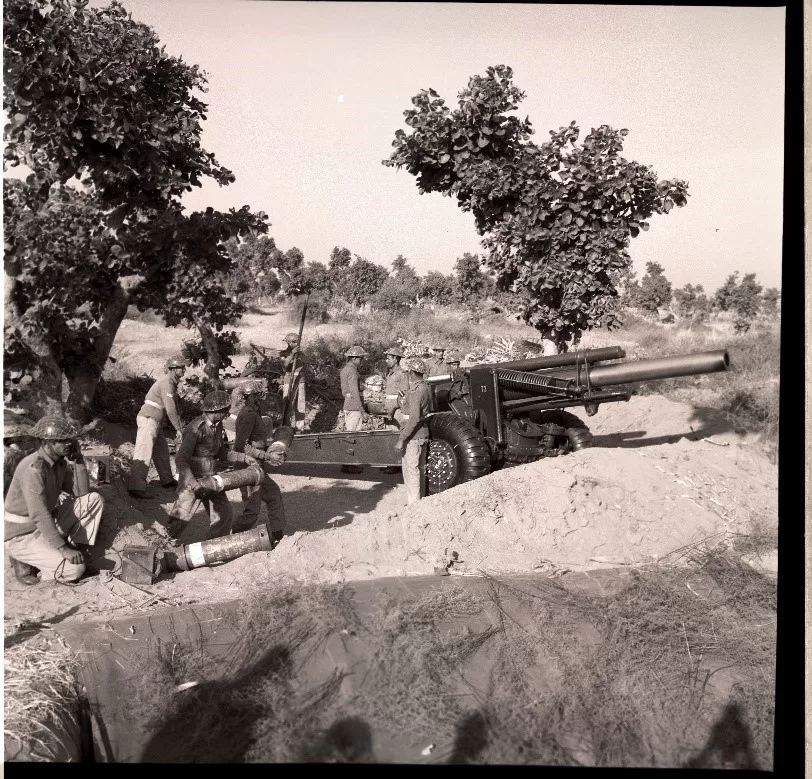
Armor Warfare Excellence:
The Pakistani Army’s adept utilization of armored forces in tank battles showcased remarkable skill and valor. The Battle of Chawinda, nestled within the Sialkot sector, epitomized Pakistani tank crews’ bravery in defending against a formidable Indian armored force, showcasing one of the fiercest tank battles, post-World War II. The Pakistani armor showed its prowess elsewhere too, particularly in Khem Karan Sector.
Crucial Aerial Support:
The Pakistan Army received pivotal aerial backing from the Pakistan Air Force (PAF), disrupting Indian supply lines and furnishing ground operations with cover. PAF’s triumphs in aerial combat, notably against Indian Hunters and Vampires, significantly bolstered defense strategies. The skirmishes above Chamb notably culminated in the Pakistani F-86 Sabres downing four Indian Vampire fighter jets, affirming their aerial dexterity.
Artillery and Infantry Excellence:
The Pakistani Army strategically employed artillery fire and infantry tactics, upholding strategic points and repelling Indian advances. The capture of Indian artillery and the adept use of artillery support underscored the army’s tactical finesse and seamless coordination.
Resilience and Determination:
The Pakistani Army’s indomitable spirit shone through, standing firm against superior Indian might. In the face of adversity, they rallied their strength to launch resolute counterattacks and sustain their defense.
Exemplary Leadership:
The Pakistani Army’s actions underlined their commitment to preserving national sovereignty and their adeptness in confronting a formidable adversary. The leadership, from top commanders to section-level officers, was exceptional. Notably, the Chamb-Jaurian sector served as a testament to their precision operations, shattering Indian defenses and extending their control from the Line of Control to the Akhnur Bridge. The ground battle for saving Lahore and allied strategic areas stand out.
Operations in brief- Pakistan Army
The Kashmir Sector
During the Indo-Pakistani War of 1965, the Pakistan Army was involved in several military operations in the Kashmir region. The war began on April 1, 1965, and lasted until September 23, 1965. The conflict primarily centered around the disputed region of Kashmir and its surrounding areas. I will mention just two operations carried out in Kashmir Sector.

• Operation Gibraltar:
Operation Gibraltar was a military maneuver conceived and executed by the Pakistan Army during August 1965 in the contested expanse of Jammu and Kashmir. This covert operation was formulated with the intent of clandestinely breaching the Line of Control (LoC) and provoking an insurrection within the predominantly Muslim populace of Kashmir against the Indian governmental authority. Pakistani military strategists believed that such a local uprising, triggered by Operation Gibraltar, would substantiate Pakistan’s justifications against India on the global platform. Deliberately chosen as a historical allusion, the name “Gibraltar” aimed to draw parallels to the historical Muslim conquests of Portugal and Spain, originating from the strategic port of Gibraltar. No enquiry has ever focused on why the plan was put into motion when both the logistics and training were almost non-existent. No enquiry has ever cast responsibility on the military hierarchy whose wrong decisions cost us the lives of those several thousand “volunteers” who died in unknown places without any recognition.
• Operation Grand Slam:
Also known as Operation Grand Slam, this was a Pakistani offensive launched in the Chamb sector of Jammu and Kashmir in end August 1965. The objective was to eventually link up with the guerillas that were launched inside Indian held Kashmir and also to cut off the Indian town of Akhnoor from the rest of India and potentially threaten the city of Jammu. This operation was carried out successfully and Pakistan Army was knocking at the Akhnur Bridge by 5 September 1965, when the Indians attacked Lahore and Sialkot on 6 September 1965, starting the all-out war.
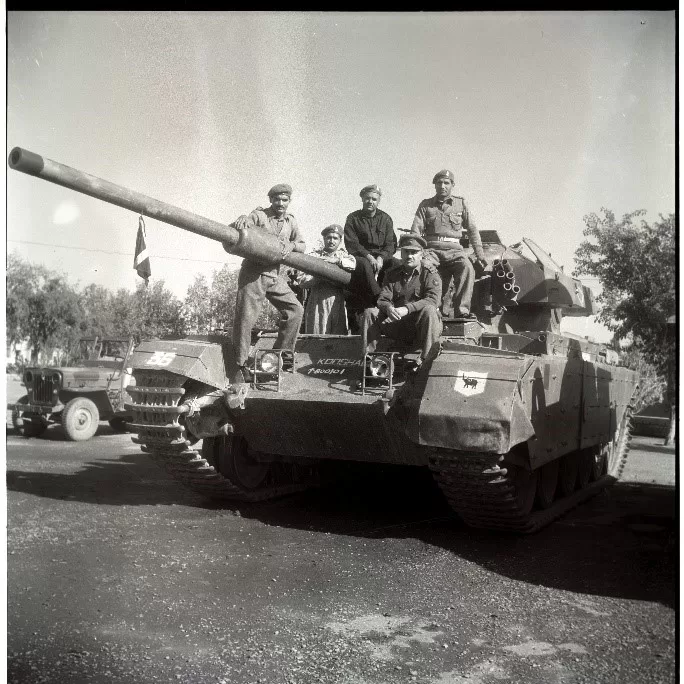
The Sialkot Sector:
The Indians drew first blood, when the attacked Sialkot on 6 September 1965, when the Pakistan Army was not even manning its main defensive positions. The Sialkot Sector was one of the main theatres of conflict between the Indian and Pakistani forces. The Indians drew first blood, when the attacked Sialkot on 6 September 1965, when the Pakistan Army was not even manning its main defensive positions. The Sialkot Sector was one of the main theatres of conflict between the Indian and Pakistani forces.
The Pakistan Army launched a major counter offensive in the Sialkot Sector with the objective of capturing key areas and putting pressure on the Indian defenses. The sector was strategically important due to its proximity to the city of Sialkot, which was a crucial transportation and communication hub. One of the most prominent battles in the Sialkot Sector was the Battle of Chawinda. Pakistani forces launched an offensive to capture the town of Chawinda, located near the border with India. The battle lasted several days and saw intense fighting between the two sides.
Another significant engagement in the Sialkot Sector was the Battle of Phillora. Pakistani forces attempted to capture the town of Phillora, the battle involved tank warfare and artillery exchanges, where heroic actions were witnessed at tactical levels and Pakistan Army was able to not only defend its territory but retake some of the lost territories. The operations in the Sialkot Sector were marked by intense fighting and heavy casualties on both sides.
The Lahore Sector:
During the Indo-Pakistan War of 1965, the Lahore Sector witnessed intense military operations between the Indian and Pakistani forces. It was the Indians who attacked Lahore on the morning of 6 September, when the Pakistan Army was on normal border watch and not in battle positions.
By the time the Pakistan Army went into their operational area, the Indian Army had already penetrated the Pakistan defenses. It was here that the PAF saved the day not only for the Pakistan Army but the whole nation, because the advancing columns of the Indian Army were reduced to rubble by the PAF’s No 19 Squadron, led by Squadron Leader Sajad Haider and his team. The Indian historians have acknowledged this in different books. A monument dedicating to the heroic action of 19 Squadron adorns 4 Corps operational area in remembrance.
One of the significant engagements in the Lahore Sector was the Battle of Burki. In this battle, Pakistani forces launched an attack on the Indian positions near the village of Burki, located southeast of Lahore. The battle was fierce, with both sides suffering casualties.
While the Pakistani forces made initial gains, the Indian Army managed to repel the attack and maintain control of the area.
The Lahore Sector saw significant fighting, and while the Pakistani Army made initial gains, the Indian forces were ultimately able to repel the attacks and defend their positions. The war ended with no major territorial changes, and both sides claimed victory.
The Sulaimanki Sector:
During the Indo-Pakistan War of 1965, the Sulaimanki Sector was a significant theater of military operations between the Pakistani and Indian forces. The sector is located in the southern part of Punjab, near the international border between the two countries.
The Pakistan Army conducted several operations in the Sulaimanki Sector as part of its broader strategy to engage Indian forces and achieve tactical objectives.
One of the key objectives for Pakistan was to capture territory, especially beyond Sulaimanki Headworks to protect, provide more strategic depth to our defenses and put pressure on Indian defenses in this sector. The operations in the Sulaimanki Sector were marked by heavy fighting and casualties on both sides, where Pakistan Army was able to achieve its objectives.
Another notable operation in the Sulaimanki Sector was the Battle of Dograi and Bedian. Pakistani forces launched an offensive to capture the Indian-held town of Dograi and the nearby village of Bedian. These areas were strategically important due to their proximity to the Sutlej River and their potential impact on the Indian defense lines.
The Battle of Dograi was particularly fierce, with intense fighting between the two sides. The Pakistani Army made initial gains and managed to enter the outskirts of Dograi. However, determined Indian counterattacks pushed the Pakistani forces back, and the town remained under Indian control. The events of the war, including the operations in the Sulaimanki Sector, continue to be studied and analyzed by historians and military experts to understand the strategies, tactics, and outcomes of the conflict.
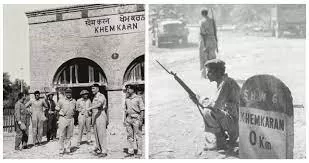
Khem Karan Sector:
The Khem Karan Sector was a strategically significant theater of operations during the Indo-Pakistan War of 1965. The sector is located in the northwestern part of India, near the international border with Pakistan. The war was marked by intense battles and military engagements as both countries sought to achieve their respective objectives.
The Pakistan Army conducted several operations in the Khem Karan Sector as part of its larger military strategy. The sector held importance due to its proximity to the town of Khem Karan and its strategic location in the defense of Punjab.
One of the most notable battles in the Khem Karan Sector was the Battle of Asal Uttar. Pakistani forces launched an offensive with the aim of capturing the Indian town of Khem Karan and making advances deeper into Indian territory. The Indian forces had prepared well-concealed anti-tank defenses, including minefields, trenches, and well-emplaced artillery. Pakistani forces faced significant casualties as they encountered strong resistance from the Indian defenders. The operations in the Khem Karan Sector were marked by heavy fighting and casualties on both sides.
The Desert Sector:
The Desert Sector, also known as the Rajasthan Sector, was a crucial theater of operations during the Indo-Pakistan War of 1965. This sector encompassed the vast desert regions in the western part of India, near the international border with Pakistan. The war in this sector witnessed significant military engagements and strategic maneuvering. Pakistan Army conducted several operations in the Desert Sector as part of its military strategy during the conflict:
The operations in the Desert Sector were marked by fierce fighting and significant casualties on both sides. The battles in this sector were characterized by tank warfare, as both India and Pakistan deployed armored units in the desert terrain.
The events in the Desert Sector during the 1965 war have continued to be studied by military historians and analysts to understand the tactics, strategies, and outcomes of the conflict. The war had a lasting impact on the region and the relationship between India and Pakistan, shaping their military doctrines and approaches in subsequent years.
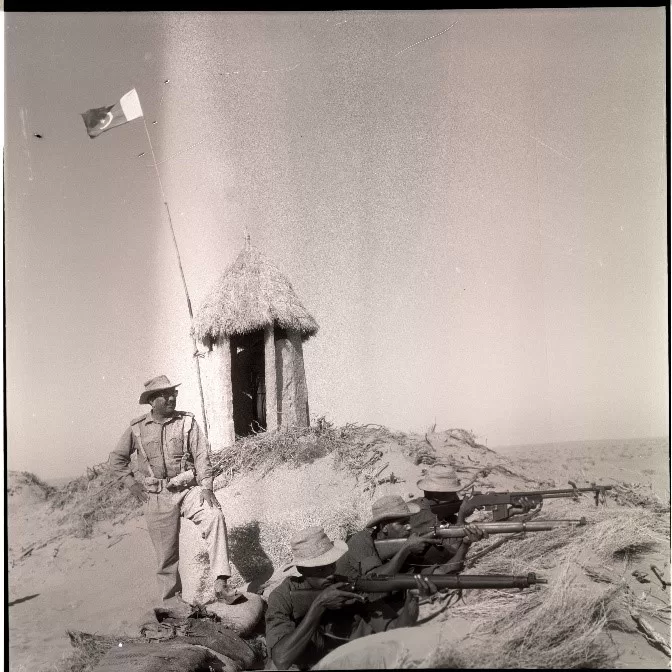
Ceasefire and End of Operations:
The war between India and Pakistan ended with a ceasefire on September 23, 1965. The ceasefire agreement halted all military operations and hostilities along the border, including in the Desert Sector. In summary, the Indo-Pakistan War of 1965 showcased the Pakistani Army’s unwavering dedication to safeguarding the nation, defying odds against a larger adversary. Amidst challenging circumstances, Pakistani soldiers demonstrated unparalleled courage, mirrored by their exceptional leadership. This conflict etched a defining chapter in history, underscoring the Pakistani Army’s strategic acumen and valor.
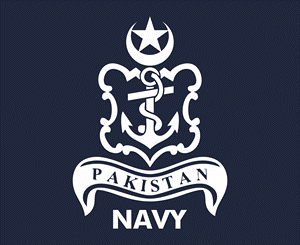
Pakistan Navy
In March 1965, the Indian military conducted a joint exercise called “Arrow Head,” a naval maneuver involving a brigade group along with INS Vikrant and a fleet of seven destroyers and frigates in the operational area of the Gulf of Kutch. During this exercise, the Indian forces engaged in a comprehensive array of naval operations, with a particular focus on carrier-based activities. These encompassed anti-submarine measures, anti-aircraft defense, airstrikes, and reconnaissance missions. In April of the same year, clashes erupted between Indian and Pakistani forces in the Rann of Kutch region, as both nations vied for control over 3500 square miles of disputed territory.


As tension escalated, the Pakistan Navy (PN) initiated patrols of the approaches to Karachi, extending southeastwards from April 1965. PNS Babur, initially a training ship, underwent conversion into an operational cruiser. All operational units, including the submarine PNS Ghazi, were elevated to full operational readiness during this period. The standoff persisted for four months until an international tribunal intervened and called for an end to hostilities. In response to intelligence gleaned from the Kutch Operations, the PN Headquarters strategized to position PNS Ghazi off Bombay in early September 1965, a strategic move intended to provide advanced warning capabilities. Upon the outbreak of hostilities and India’s assaults on Lahore and Sialkot, the Navy was tasked with a mission to neutralize an Indian Coastal Radar base located at Dwarka, which was aiding Indian Air Force strikes on Karachi. A Task Group comprising seven PN vessels, including the cruiser Babur and destroyers Khaibar, Badr, Shahjahan, Alamgir, Jahangir, and Tipoo Sultan, was dispatched for a midnight bombardment operation codenamed ‘Operation Somnath’ on September 7th-8th, 1965. The operation achieved its goals, and the PN Ships promptly resumed their patrolling routines off Karachi.
On September 18, 1965, two PN destroyers and the cruiser BABUR were assigned to protect the Pakistan Merchant ship MV Bagh e Karachi in the Gulf of Aden.
The merchant ship, laden with vital supplies for the Pakistan Air Force, was escorted safely back to Karachi, marking another successful operation. In a separate engagement on September 22, 1965, PNS Ghazi, stationed off Bombay, identified two contacts, which were later confirmed as Indian Navy frigates. After tracking them meticulously for a day, PNS Ghazi positioned itself, launching a precise attack at 1912 hours, resulting in direct hits after a full day of investigation and pursuit.
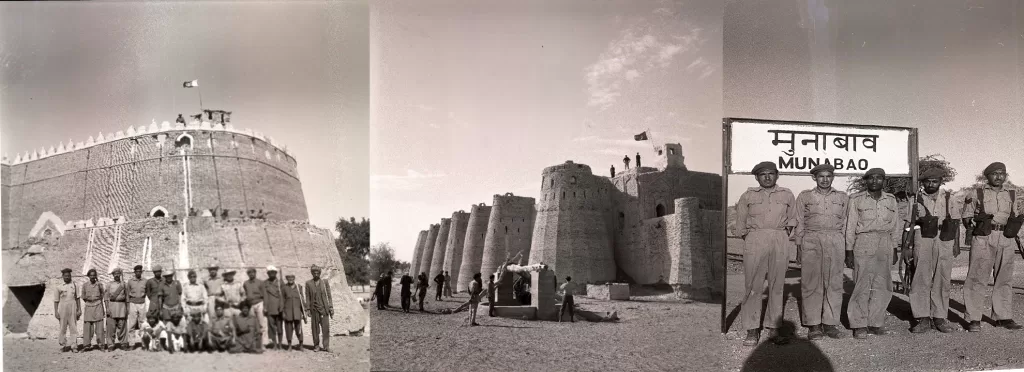
These events underline the strategic acumen, resilience, and effectiveness of the Pakistan Navy during the Indo-Pakistan War of 1965, as they adeptly carried out critical operations, safeguarding Pakistan’s interests and assets.

PAF
The Pakistan Air Force (PAF) played a pivotal and transformative role during the Indo-Pakistan War of 1965. Despite facing numerical and technological disadvantages compared to the Indian Air Force (IAF), the PAF’s strategic acumen, daring tactics, and unwavering commitment reshaped the dynamics of the conflict. Here’s an overview of the PAF’s contributions during the war:
Preemptive Strikes:
The PAF launched preemptive airstrikes on Indian air bases, particularly targeting the forward bases, in a strategic move aimed at disrupting the IAF’s operational capabilities. These attacks, including strikes on Adampur, Halwara, and Pathankot, forced the IAF to evacuate their advanced airfields, thereby gaining an initial air superiority in the conflict zone.
Air Superiority:
Despite being outnumbered and outgunned, the PAF managed to achieve air superiority over crucial battle areas. This accomplishment was vital in safeguarding Pakistan’s ground operations and preventing Indian air dominance, allowing the Pakistani ground forces to operate more effectively
Aerial Combat:
The PAF engaged in numerous aerial dogfights with the IAF, demonstrating remarkable skill and tenacity. The Pakistani pilots, flying American-built F-86 Sabre jets, showcased their proficiency in aerial combat against the IAF’s more modern aircraft. These encounters underscored the PAF’s competence and ability to hold their own against technologically advanced adversaries. Some of these battles were seen by the general public, over, Sargodha, Lahore, Sialkot and Chamb-Jaurian sectors.
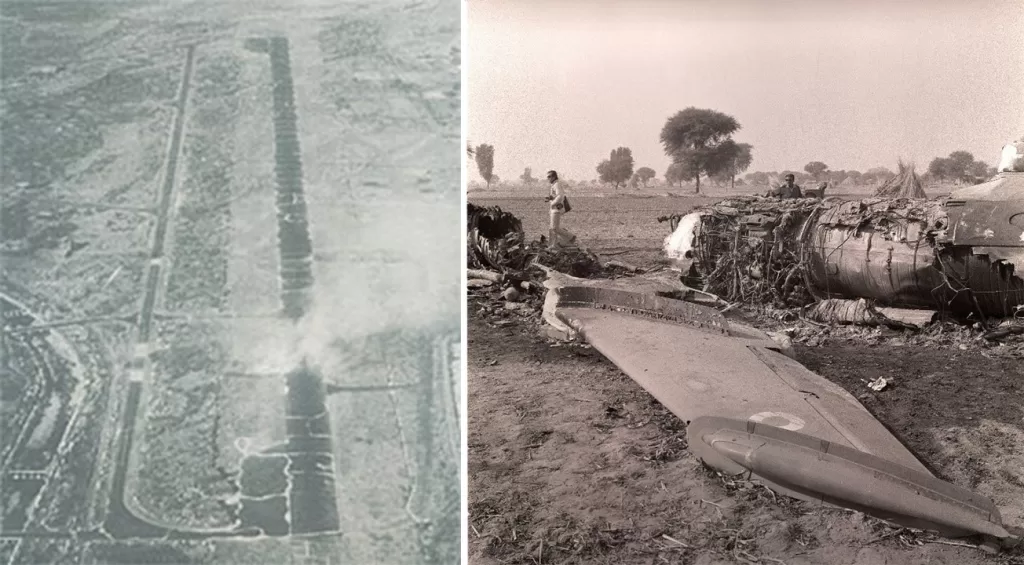
Strategic Bombing:
The PAF conducted strategic bombing missions deep into Indian territory, targeting key military installations, industrial centers, and infrastructure. These attacks inflicted substantial damage and compelled the Indian military to divert resources from the front lines to protect their hinterland.
Close Air Support:
The PAF provided crucial close air support to ground troops, aiding them in battles by suppressing enemy positions and facilitating advances. This support helped the Pakistan Army in breaking through Indian defenses and making strategic gains on the ground.
Innovative Tactics:
The PAF employed innovative tactics to maximize their impact with limited resources. Notably, they utilized B-57 bombers for night bombing missions, exploiting the cover of darkness to evade enemy defenses and cause significant disruption


